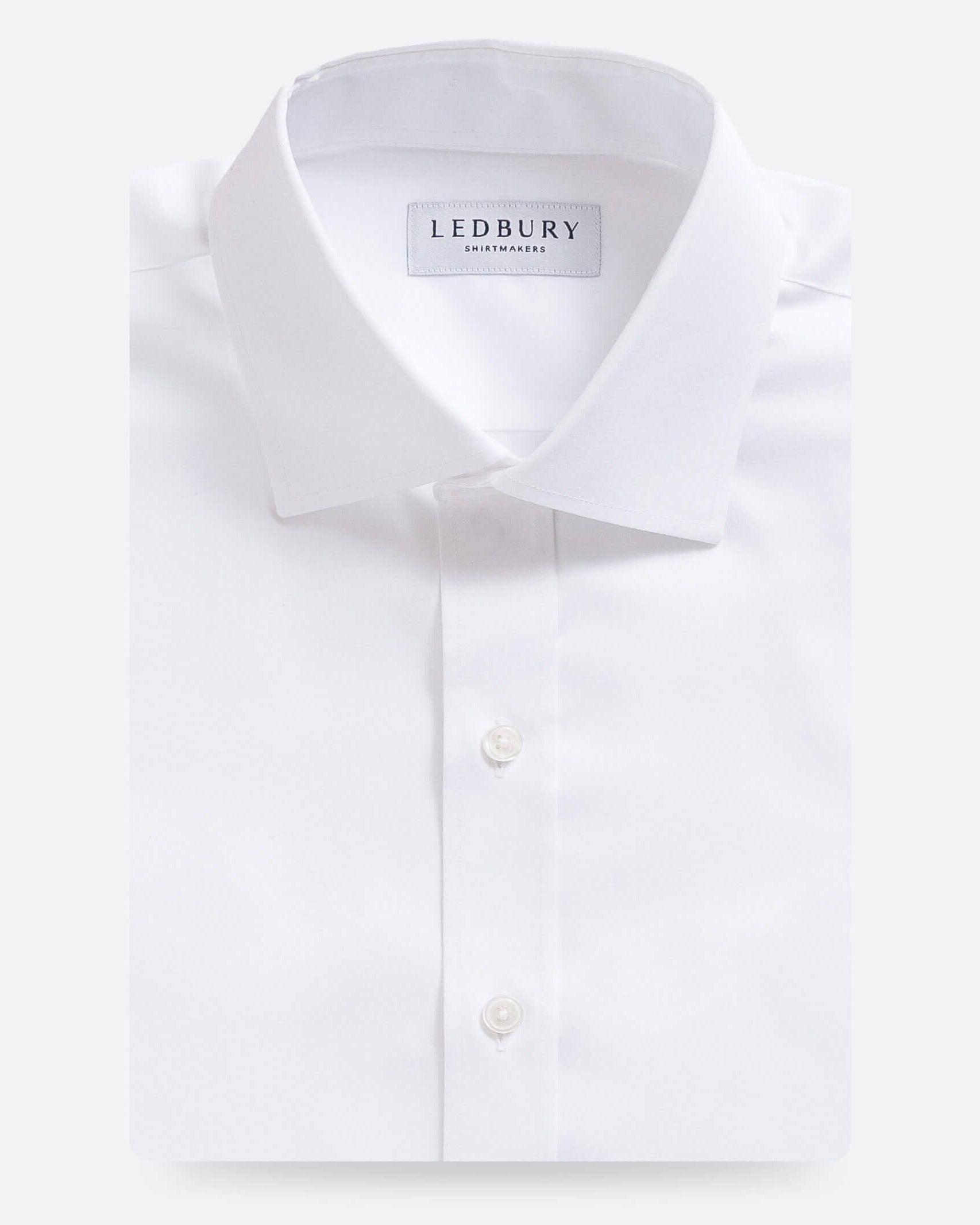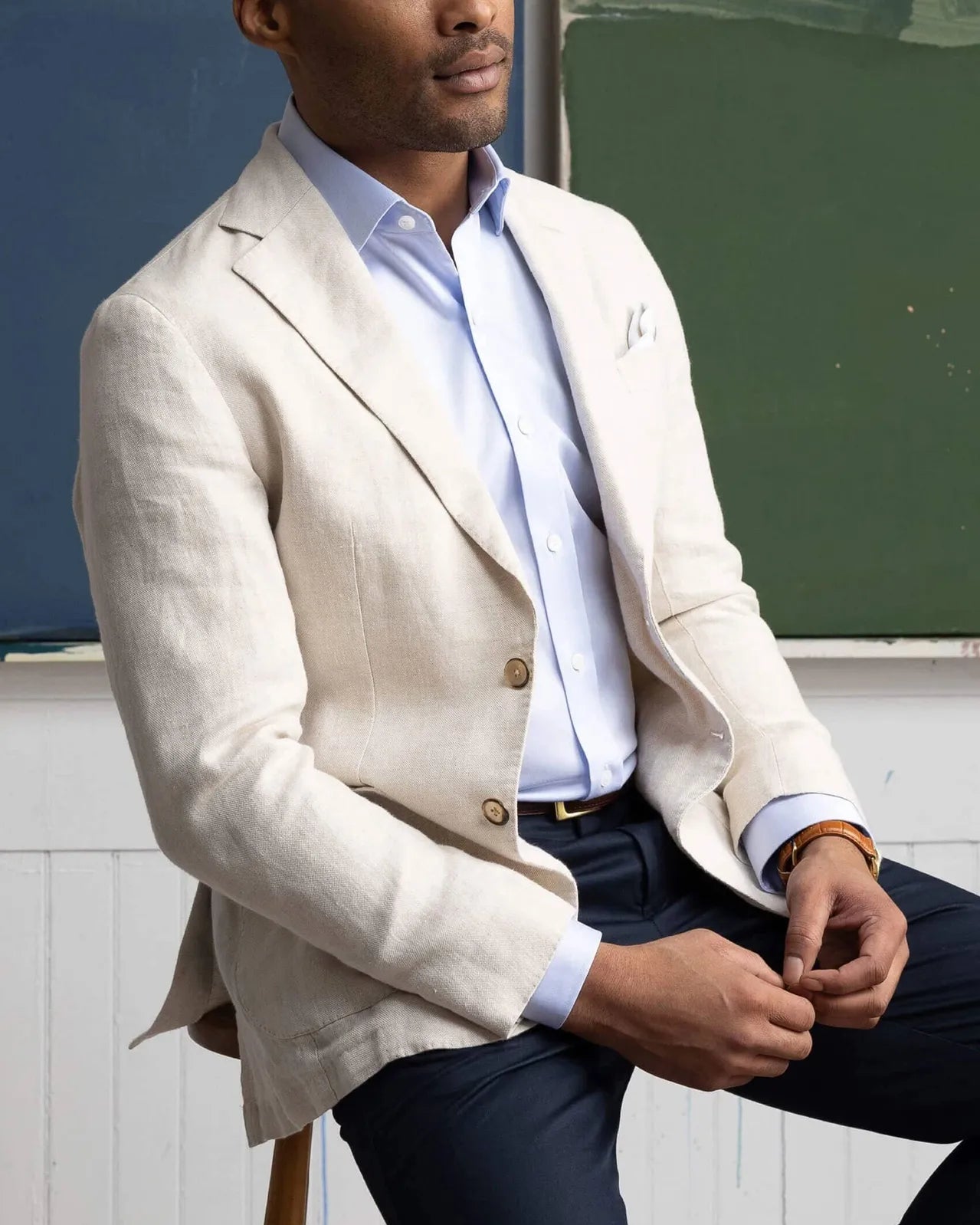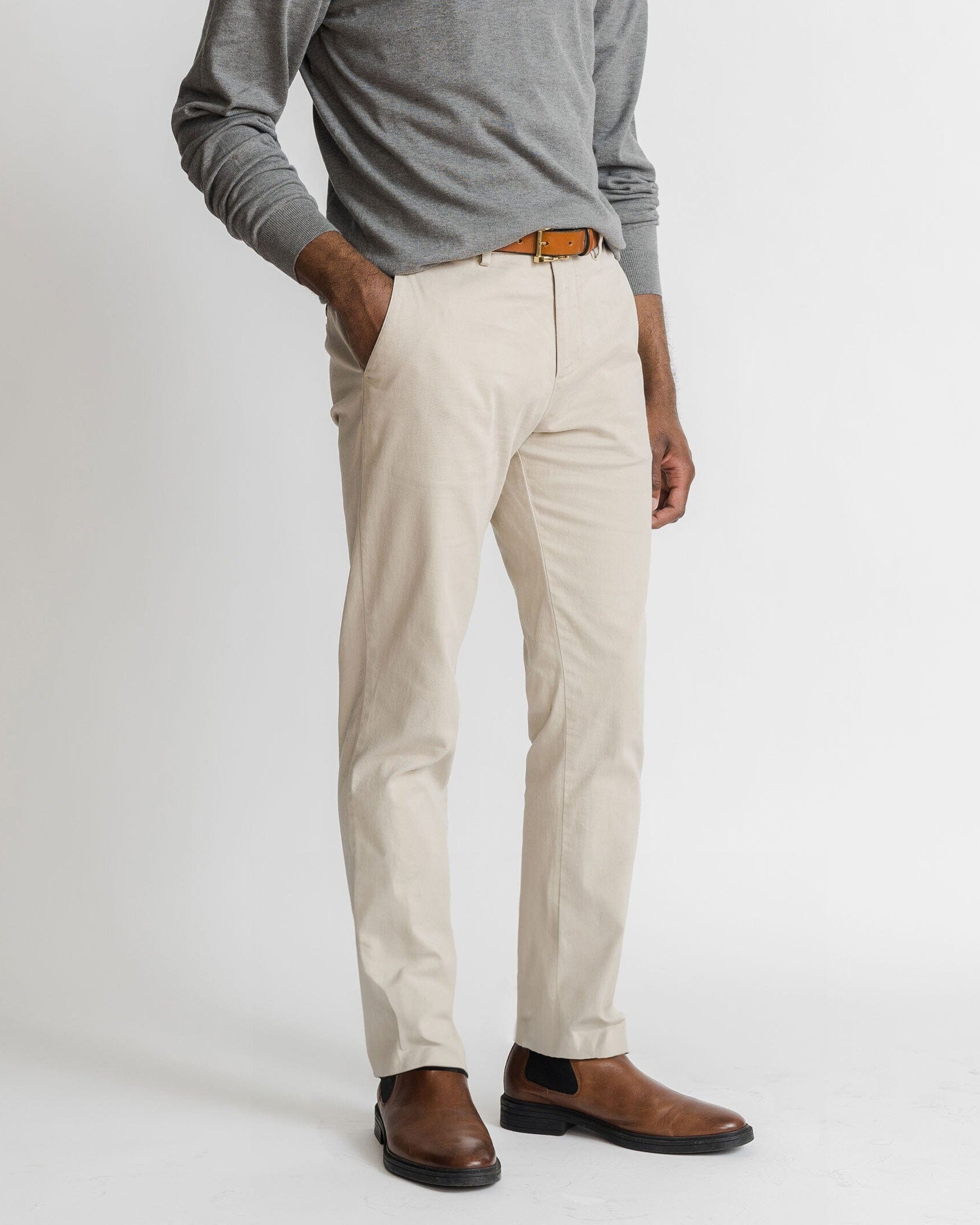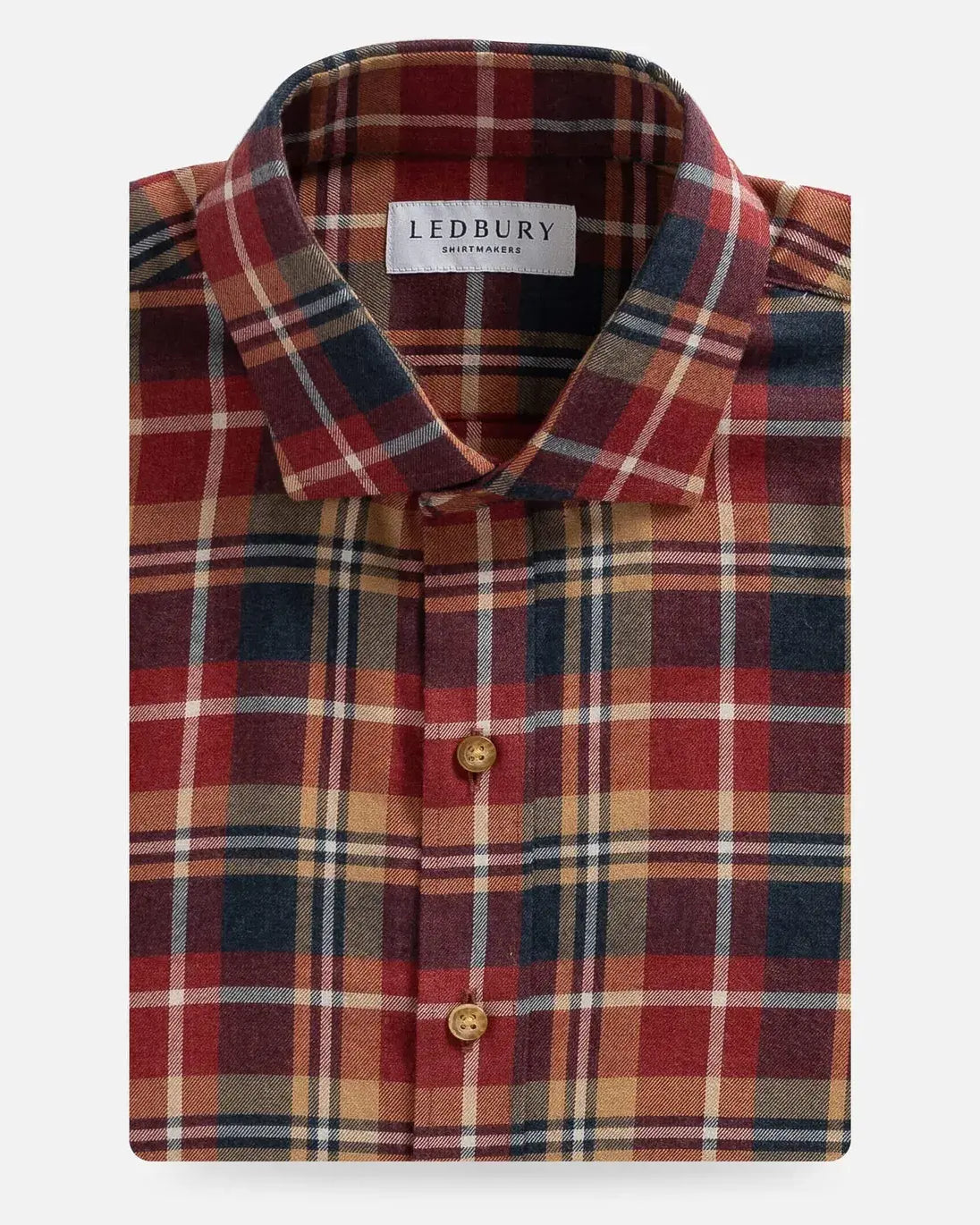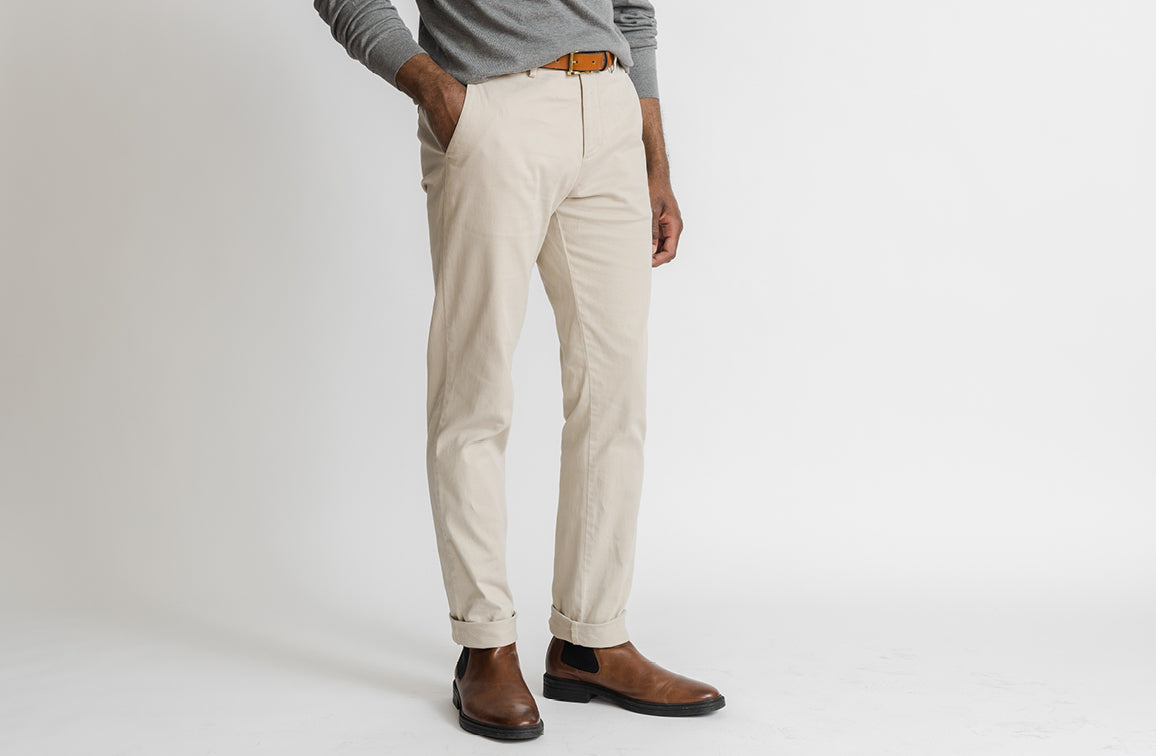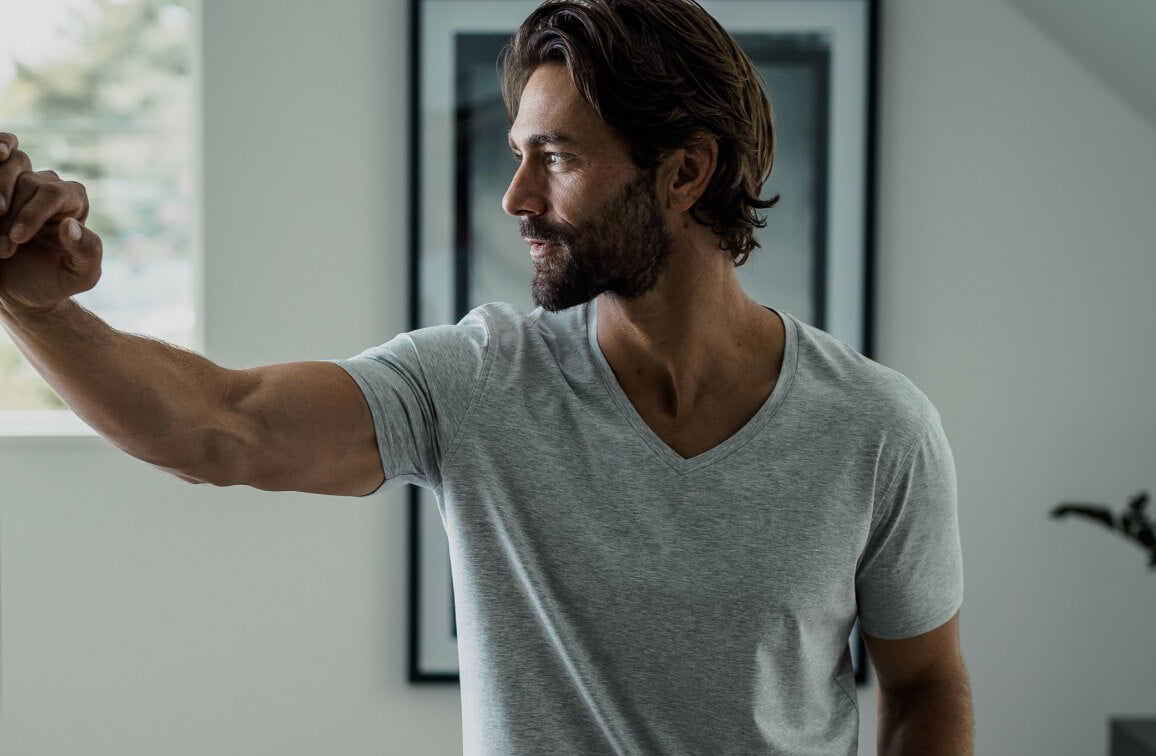







 The music video is a complex opportunity. On one hand, the medium feels like a nod to an era that has already passed and gone. We’re venturing to guess that most of us remember when MTV actually played videos. On the other hand, the music video is still a platform for non-conventional storytelling with a built-in sound track. And now that more people are watching music videos online, the medium has the potential for an even greater reach.
When our friends J. Roddy and The Business were looking to put together a video for their song, “Same Days”, they saw an opportunity to tap into the incredible pool of talent, creativity and resources that exists here in Richmond. As a result, the band ended up working with two creative directors, Brig White and Evan Parsons, and produced an incredible finished product.
We sat down the other day with Brig and Evan to talk about everything from the challenges of making the video to the changing landscape of conventional advertising.
Can you tell you tell us more about your roles at The Martin Agency and at Hue and Cry? The two organizations are closely related but serve different purposes.
Brig: I’m an Associate Creative Director at The Martin Agency and Evan is an Associate Creative Director at Hue and Cry. The Martin Agency is a full service ad agency, and for me, has really become my home. What I love about Martin is that we’re doing very cutting edge work with some really good people. Hue and Cry is part of The Martin Agency but also a little separate.
Evan: Hue and Cry is essentially a production company inside of The Martin Agency. It’s a unique relationship that has real potential. I came on board in October and have never worked within an ad agency before. I was always on the production side. Hue and Cry is bringing that type of production-based role inside of Martin. Normally the agency is a separate group so the relationship is usually far more defined. But here it’s created an interesting grey area.
With this grey area, do you have that mentality that Martin is a client of sorts with 24-hour access to you?
Evan: Yeah, in a way. It can be daunting sometimes, but it’s great in so many ways. The cool thing that has happened is that there are opportunities to form relationships like the one that Brig and I have. There’s no way we would be able to connect in this way if we were operating out of separate companies. It allows for a more fluid and lucid creative process.
Brig: What’s fun about the mixture of the two different types of creative houses is the range of talent that you can draw from. It’s much greater. On the agency side there are highly conceptually driven people. On the production side, to have a production facility so close, you have people that can execute. That’s the dream, to bring both concept and execution together in a way that you can just make stuff on the fly. What we’re really trying to establish, and it’s already working, is something that’s almost a research and development department. That’s something that the old Mad Men era agencies had in the earlier years of advertising. That kind of went away because it wasn’t necessarily a profit/loss statement attached to them. We’re trying to bring this back. With all the different kinds of media out there and the way that production is democratizing and getting cheaper, the places to play are infinite at this point. So we really need to become experts in all these different fields. We need to have a research and development department just to try stuff. Even if there isn’t necessarily any money attached to it.
The advertising industry is shifting and evolving out of necessity. Would you consider the relationship between The Martin Agency and Hue and Cry a pioneering situation in a way? Is this happening in other places?
Evan: I don’t know if we’re pioneers necessarily, but I definitely see changes within the industry happening from my perspective. There’s the client, there’s the agency, and there’s production. Historically, the agency is kind of a middleman. After the recession, things retracted and receded a lot. There will always be the clients, and there will always be the people who make the work. The agency’s role could technically dissolve.
There are two things happening that I see a lot. We call it client direct, when the client goes directly to the production house without the use of an agency. There’s the other side of that where the agency does the production work in house and the middleman role becomes even greyer. The latter is what’s happening between Hue and Cry and Martin. The best work is always going to come from this structure because the people who are doing the work are the ones coming up with the ideas.
Brig: To your point on the industry, it is true that it is shifting. And it’s a dramatic shift across the whole industry, especially with how accessible production has become. We aren’t shooting on film anymore and all of a sudden everyone has a camera. People are picking up Canon 5Ds and shooting things that were only accessible to a very small group of people before. Just within the last two years, we’ve been in the age of making. Joe Alexander, The Martin Agency’s Chief Creative Officer, is a huge proponent of this. He wants all of us to be makers.
So we’ve really taken that to heart. Evan and I really want to be out making something every month. That’s been our goal. So far, we’ve been doing it. Not everything that we shoot is amazing. Not everything that we shoot is a J. Roddy Walston and The Business video. But we feel like the more we make, the better we get.
Speaking of the J. Roddy video for “Same Days,” how did Hue and Cry become involved in its production?
Brig: Heather, our producer, had the initial relationship with Rod, and she introduced us to him. We hit it off immediately, and he was very open to our artistic vision. We showed him a huge range of treatments and he ended up landing on this script about how things connect. That’s really what the music video turned into – how everyday moments can connect in these strange ways.
That’s such a powerful concept in a way. On paper it seems accessible, but when you watch it unfold, the actual execution of the idea is much more complex.
Evan: I was surprised how powerful it turned out. We had a bunch of treatments that were great, yet complex. Then there was this simple one and for some reason Rod decided that this one would be it. From there it blossomed and expanded. It goes back to that attainable concept that people latch on to – they can see it before it’s completed. That’s the vehicle that we’re always looking for. Whatever that one liner is that allows everyone to get it. Even when it’s a complex story, like the 5th Element, there has to be a singular line that makes you confident that it will be great. Then you build out from there.
We’ve watched the video a few times, and you can see that it’s working on a couple of levels. Visually it’s beautiful, and it’s fun to watch. It’s a great song, so the whole thing lines up in a very entertaining way. But if you look at it again, you see that you all have started to explore some really complex concepts.
Brig: What’s funny about telling a story that may necessarily not have one meaning, which was our goal from the beginning, is that people take away different things from it. When you tell a story and drag people’s noses through it and show them exactly what they need to know, then it becomes a very flat story. We took imagery of a butcher, the imagery of being young and reckless and the imagery of losing the best years of your life and combined them together in a way that had the potential to mean so many different things to so many different people depending on what phase of life they’re in. It’s way more fun to tell a story in this way and allow people to take away what they want to take away.
The thing is that a lot of music videos tend to go for the quick and accessible imagery. You guys have gone beyond that and created something that people are going to react to, both positively and negatively. It is a significant achievement in this era of throwaway culture.
Brig: I think there will be some people that watch it and say, “I don’t get it,” and that will be the end of it. There’s so much in life that you go around. Anything that you don’t instantly get, you just pass right over it. I’ve come to realize that it’s such a more gratifying experience to slow down, look at things more carefully and ask myself, “what am I missing” instead of impulsively judging and moving on.
You mentioned earlier that projects like this one feel like R&D. Have there been any lessons you’ve learned from shooting the video and how might they influence future work?
Evan: This was the first time that we’ve done such abstract storytelling. There’s no get – just setting people up for a conversation. It seems odd that it’s such a loose story, since we put so much effort into curating it. It’s just a different style of storytelling. It’s almost not storytelling but concept curating. This has really opened my thinking up a lot more. Maybe if you are telling a linear story, maybe there’s room for more abstract storytelling in there.
On the technical side, the way that we’re learning how we need to function in this space was big. We have another big shoot coming up that we will be shooting five weeks from now. After going through the process and working on this one, it’s going to allow us to have more freedom. We’re not so worried about how to solve the story problems; we’re going to leave the door open a little.
Brig: The biggest thing that I took away from the production of this video is learning to stay motivated to keep taking another step forward when I’m in doubt. This is something that we produced between meetings and on the side. We were nowhere near ready, nor did we have enough money, people or resources to pull any of this off, but we kept moving forward and somehow everything began to appear the way that they should. When you take a step forward and say, “I don’t know what’s going to happen, but let’s do it.” That’s when great ideas happen.
Whenever I’m on a project where I know the exact outcome, it’s not nearly as engaging. When you’re scared and you don’t know what’s going to happen, but willing to take a risk, that’s the best place to be. Just as often as it works, it’s not going to work, and that’s ok. You have to be ok with failure too.
That’s not necessarily an easy mentality to embrace in a client driven agency setting sometimes. Fear of failure is a great motivator for a lot of ideas sometimes. Where you could go with the really cool thing that might not come together, or the safe, semi-cool thing but everyone’s heart isn’t into it.
Brig: I think you’re right. The way client structure is set up. Nine times out of ten, we always go for the safe one where we know what the outcome is going to be. Everybody feels very comfortable and content because it is a success, but there isn’t that sense of excitement that comes from really venturing into the unknown.
You almost self edit to a degree because you think, “I know they aren’t going to go with this thing, so I’m not even going to present it.” It really takes a special client to hand over complete creative control to the agency and/or production house.
Brig: It takes a lot of courage for someone to give someone else the reigns like that. It’s a stronger person or a stronger client that does that. Some of the greatest brands in the world plan on this. This is where true creativity happens. Salvador Dali didn’t allow every single one of his paintings to leave his gallery. Many of them were total failures, and he planned on that. Without the freedom to mess up, I don’t believe that true creativity is really possible.
Stylistically, are you two coming from the same direction or from two different places? What has influenced this?
Evan: I think we come from different places but our reasoning is aligned. I studied graphics, and I know Brig has had a lot of involvement in graphics as well. I think it’s awesome to share and have some alignment among different perspectives. In the J. Roddy video, there isn’t anything that calls out, “This is the stuff from Evan, and this is the stuff from Brig.” It all really did mesh nicely. I think because we talk a lot about things, there were never any significant stylistic conflicts.
As creative directors, a big part of your job is referencing material and seeking inspiration. Are there any places that you consistently return to for this purpose?
Brig: I think my favorite inspiration comes from young people who don’t know what they’re doing. Energy mostly inspires me, more than final product. For me, I always want to surround myself with as much young, hungry, naïve talent as I can. That’s where I find my inspiration.
Is there anyone who has transitioned from being a young, rough, raw artist into a more polished area but has somehow managed to maintain his or her youthful energy?
Brig: The first person that I think of is Spike Jonze. Spike Jonze still shoots skateboard videos. He just directed Her, which was very experimental and successful, but he is still doing skateboard videos. This anchors him to the young Spike Jonze that everyone loved immediately, because of his passion and quirkiness. If you look at the breadth of his portfolio, he is always experimenting. He takes a children’s book, and turns it into a beautiful film. He does this crazy stunt music video that was shot on a security camera with a dance troupe. I especially admire his breadth. He’s like, “I already did that. I’m not interested in that, I want to try something brand new.” Going back to our theme of trying things and failing. He’s failing all over the place. So I really respect that.
The workflow process between Hue and Cry and The Martin Agency is off to a promising start. On a final note, where do you see the direction of this relationship moving onto within the next few years?
Brig: Both Martin and Hue and Cry will need to keep evolving. As they both continue to collaborate, Hue and Cry is going to be able to understand techniques to make clients better work from a branding and conceptual perspective. Martin is going to get some of that making mentality from Hue and Cry. In a way, both will grow up together.
Evan: We want to create this very special pocket of talent here that exists outside of New York and Los Angeles. If anyone is going to be here in Richmond that’s really talented, they need to be working with us. There are a few around the nation, and certainly around the world, but these are rare. It’s impossible to find super high-end work, done by very talented people in a place where you can get off at a reasonable hour and catch a beer by the river. What we’re doing is going to be invaluable to The Martin Agency, and we’re going to have a very close relationship both ways. That’s the goal, to create a very special pocket where we can really attract exceptional talent that is normally stuck in the confinements of a major metropolitan area.
The music video is a complex opportunity. On one hand, the medium feels like a nod to an era that has already passed and gone. We’re venturing to guess that most of us remember when MTV actually played videos. On the other hand, the music video is still a platform for non-conventional storytelling with a built-in sound track. And now that more people are watching music videos online, the medium has the potential for an even greater reach.
When our friends J. Roddy and The Business were looking to put together a video for their song, “Same Days”, they saw an opportunity to tap into the incredible pool of talent, creativity and resources that exists here in Richmond. As a result, the band ended up working with two creative directors, Brig White and Evan Parsons, and produced an incredible finished product.
We sat down the other day with Brig and Evan to talk about everything from the challenges of making the video to the changing landscape of conventional advertising.
Can you tell you tell us more about your roles at The Martin Agency and at Hue and Cry? The two organizations are closely related but serve different purposes.
Brig: I’m an Associate Creative Director at The Martin Agency and Evan is an Associate Creative Director at Hue and Cry. The Martin Agency is a full service ad agency, and for me, has really become my home. What I love about Martin is that we’re doing very cutting edge work with some really good people. Hue and Cry is part of The Martin Agency but also a little separate.
Evan: Hue and Cry is essentially a production company inside of The Martin Agency. It’s a unique relationship that has real potential. I came on board in October and have never worked within an ad agency before. I was always on the production side. Hue and Cry is bringing that type of production-based role inside of Martin. Normally the agency is a separate group so the relationship is usually far more defined. But here it’s created an interesting grey area.
With this grey area, do you have that mentality that Martin is a client of sorts with 24-hour access to you?
Evan: Yeah, in a way. It can be daunting sometimes, but it’s great in so many ways. The cool thing that has happened is that there are opportunities to form relationships like the one that Brig and I have. There’s no way we would be able to connect in this way if we were operating out of separate companies. It allows for a more fluid and lucid creative process.
Brig: What’s fun about the mixture of the two different types of creative houses is the range of talent that you can draw from. It’s much greater. On the agency side there are highly conceptually driven people. On the production side, to have a production facility so close, you have people that can execute. That’s the dream, to bring both concept and execution together in a way that you can just make stuff on the fly. What we’re really trying to establish, and it’s already working, is something that’s almost a research and development department. That’s something that the old Mad Men era agencies had in the earlier years of advertising. That kind of went away because it wasn’t necessarily a profit/loss statement attached to them. We’re trying to bring this back. With all the different kinds of media out there and the way that production is democratizing and getting cheaper, the places to play are infinite at this point. So we really need to become experts in all these different fields. We need to have a research and development department just to try stuff. Even if there isn’t necessarily any money attached to it.
The advertising industry is shifting and evolving out of necessity. Would you consider the relationship between The Martin Agency and Hue and Cry a pioneering situation in a way? Is this happening in other places?
Evan: I don’t know if we’re pioneers necessarily, but I definitely see changes within the industry happening from my perspective. There’s the client, there’s the agency, and there’s production. Historically, the agency is kind of a middleman. After the recession, things retracted and receded a lot. There will always be the clients, and there will always be the people who make the work. The agency’s role could technically dissolve.
There are two things happening that I see a lot. We call it client direct, when the client goes directly to the production house without the use of an agency. There’s the other side of that where the agency does the production work in house and the middleman role becomes even greyer. The latter is what’s happening between Hue and Cry and Martin. The best work is always going to come from this structure because the people who are doing the work are the ones coming up with the ideas.
Brig: To your point on the industry, it is true that it is shifting. And it’s a dramatic shift across the whole industry, especially with how accessible production has become. We aren’t shooting on film anymore and all of a sudden everyone has a camera. People are picking up Canon 5Ds and shooting things that were only accessible to a very small group of people before. Just within the last two years, we’ve been in the age of making. Joe Alexander, The Martin Agency’s Chief Creative Officer, is a huge proponent of this. He wants all of us to be makers.
So we’ve really taken that to heart. Evan and I really want to be out making something every month. That’s been our goal. So far, we’ve been doing it. Not everything that we shoot is amazing. Not everything that we shoot is a J. Roddy Walston and The Business video. But we feel like the more we make, the better we get.
Speaking of the J. Roddy video for “Same Days,” how did Hue and Cry become involved in its production?
Brig: Heather, our producer, had the initial relationship with Rod, and she introduced us to him. We hit it off immediately, and he was very open to our artistic vision. We showed him a huge range of treatments and he ended up landing on this script about how things connect. That’s really what the music video turned into – how everyday moments can connect in these strange ways.
That’s such a powerful concept in a way. On paper it seems accessible, but when you watch it unfold, the actual execution of the idea is much more complex.
Evan: I was surprised how powerful it turned out. We had a bunch of treatments that were great, yet complex. Then there was this simple one and for some reason Rod decided that this one would be it. From there it blossomed and expanded. It goes back to that attainable concept that people latch on to – they can see it before it’s completed. That’s the vehicle that we’re always looking for. Whatever that one liner is that allows everyone to get it. Even when it’s a complex story, like the 5th Element, there has to be a singular line that makes you confident that it will be great. Then you build out from there.
We’ve watched the video a few times, and you can see that it’s working on a couple of levels. Visually it’s beautiful, and it’s fun to watch. It’s a great song, so the whole thing lines up in a very entertaining way. But if you look at it again, you see that you all have started to explore some really complex concepts.
Brig: What’s funny about telling a story that may necessarily not have one meaning, which was our goal from the beginning, is that people take away different things from it. When you tell a story and drag people’s noses through it and show them exactly what they need to know, then it becomes a very flat story. We took imagery of a butcher, the imagery of being young and reckless and the imagery of losing the best years of your life and combined them together in a way that had the potential to mean so many different things to so many different people depending on what phase of life they’re in. It’s way more fun to tell a story in this way and allow people to take away what they want to take away.
The thing is that a lot of music videos tend to go for the quick and accessible imagery. You guys have gone beyond that and created something that people are going to react to, both positively and negatively. It is a significant achievement in this era of throwaway culture.
Brig: I think there will be some people that watch it and say, “I don’t get it,” and that will be the end of it. There’s so much in life that you go around. Anything that you don’t instantly get, you just pass right over it. I’ve come to realize that it’s such a more gratifying experience to slow down, look at things more carefully and ask myself, “what am I missing” instead of impulsively judging and moving on.
You mentioned earlier that projects like this one feel like R&D. Have there been any lessons you’ve learned from shooting the video and how might they influence future work?
Evan: This was the first time that we’ve done such abstract storytelling. There’s no get – just setting people up for a conversation. It seems odd that it’s such a loose story, since we put so much effort into curating it. It’s just a different style of storytelling. It’s almost not storytelling but concept curating. This has really opened my thinking up a lot more. Maybe if you are telling a linear story, maybe there’s room for more abstract storytelling in there.
On the technical side, the way that we’re learning how we need to function in this space was big. We have another big shoot coming up that we will be shooting five weeks from now. After going through the process and working on this one, it’s going to allow us to have more freedom. We’re not so worried about how to solve the story problems; we’re going to leave the door open a little.
Brig: The biggest thing that I took away from the production of this video is learning to stay motivated to keep taking another step forward when I’m in doubt. This is something that we produced between meetings and on the side. We were nowhere near ready, nor did we have enough money, people or resources to pull any of this off, but we kept moving forward and somehow everything began to appear the way that they should. When you take a step forward and say, “I don’t know what’s going to happen, but let’s do it.” That’s when great ideas happen.
Whenever I’m on a project where I know the exact outcome, it’s not nearly as engaging. When you’re scared and you don’t know what’s going to happen, but willing to take a risk, that’s the best place to be. Just as often as it works, it’s not going to work, and that’s ok. You have to be ok with failure too.
That’s not necessarily an easy mentality to embrace in a client driven agency setting sometimes. Fear of failure is a great motivator for a lot of ideas sometimes. Where you could go with the really cool thing that might not come together, or the safe, semi-cool thing but everyone’s heart isn’t into it.
Brig: I think you’re right. The way client structure is set up. Nine times out of ten, we always go for the safe one where we know what the outcome is going to be. Everybody feels very comfortable and content because it is a success, but there isn’t that sense of excitement that comes from really venturing into the unknown.
You almost self edit to a degree because you think, “I know they aren’t going to go with this thing, so I’m not even going to present it.” It really takes a special client to hand over complete creative control to the agency and/or production house.
Brig: It takes a lot of courage for someone to give someone else the reigns like that. It’s a stronger person or a stronger client that does that. Some of the greatest brands in the world plan on this. This is where true creativity happens. Salvador Dali didn’t allow every single one of his paintings to leave his gallery. Many of them were total failures, and he planned on that. Without the freedom to mess up, I don’t believe that true creativity is really possible.
Stylistically, are you two coming from the same direction or from two different places? What has influenced this?
Evan: I think we come from different places but our reasoning is aligned. I studied graphics, and I know Brig has had a lot of involvement in graphics as well. I think it’s awesome to share and have some alignment among different perspectives. In the J. Roddy video, there isn’t anything that calls out, “This is the stuff from Evan, and this is the stuff from Brig.” It all really did mesh nicely. I think because we talk a lot about things, there were never any significant stylistic conflicts.
As creative directors, a big part of your job is referencing material and seeking inspiration. Are there any places that you consistently return to for this purpose?
Brig: I think my favorite inspiration comes from young people who don’t know what they’re doing. Energy mostly inspires me, more than final product. For me, I always want to surround myself with as much young, hungry, naïve talent as I can. That’s where I find my inspiration.
Is there anyone who has transitioned from being a young, rough, raw artist into a more polished area but has somehow managed to maintain his or her youthful energy?
Brig: The first person that I think of is Spike Jonze. Spike Jonze still shoots skateboard videos. He just directed Her, which was very experimental and successful, but he is still doing skateboard videos. This anchors him to the young Spike Jonze that everyone loved immediately, because of his passion and quirkiness. If you look at the breadth of his portfolio, he is always experimenting. He takes a children’s book, and turns it into a beautiful film. He does this crazy stunt music video that was shot on a security camera with a dance troupe. I especially admire his breadth. He’s like, “I already did that. I’m not interested in that, I want to try something brand new.” Going back to our theme of trying things and failing. He’s failing all over the place. So I really respect that.
The workflow process between Hue and Cry and The Martin Agency is off to a promising start. On a final note, where do you see the direction of this relationship moving onto within the next few years?
Brig: Both Martin and Hue and Cry will need to keep evolving. As they both continue to collaborate, Hue and Cry is going to be able to understand techniques to make clients better work from a branding and conceptual perspective. Martin is going to get some of that making mentality from Hue and Cry. In a way, both will grow up together.
Evan: We want to create this very special pocket of talent here that exists outside of New York and Los Angeles. If anyone is going to be here in Richmond that’s really talented, they need to be working with us. There are a few around the nation, and certainly around the world, but these are rare. It’s impossible to find super high-end work, done by very talented people in a place where you can get off at a reasonable hour and catch a beer by the river. What we’re doing is going to be invaluable to The Martin Agency, and we’re going to have a very close relationship both ways. That’s the goal, to create a very special pocket where we can really attract exceptional talent that is normally stuck in the confinements of a major metropolitan area.
Check back in later this week for to view the music video for J. Roddy Walston and The Business’ “Same Days”.

